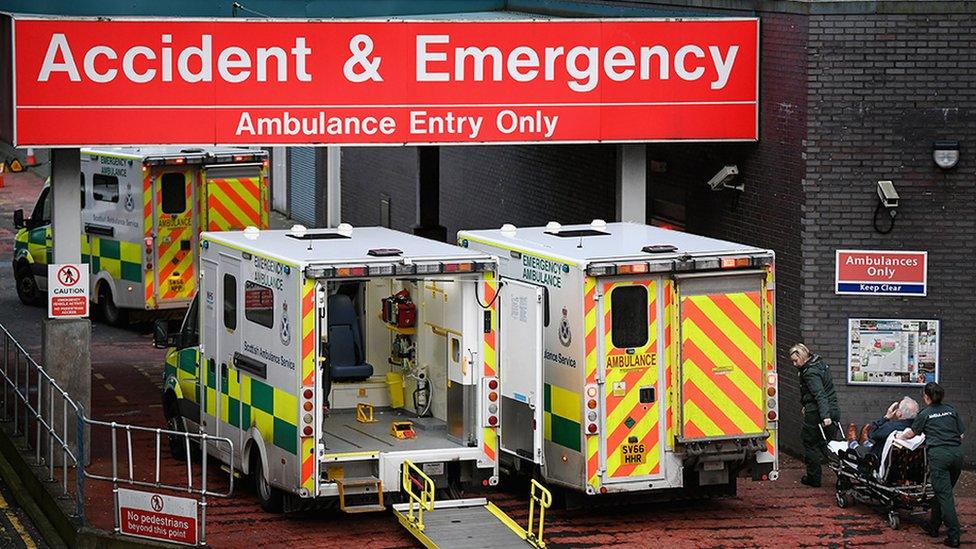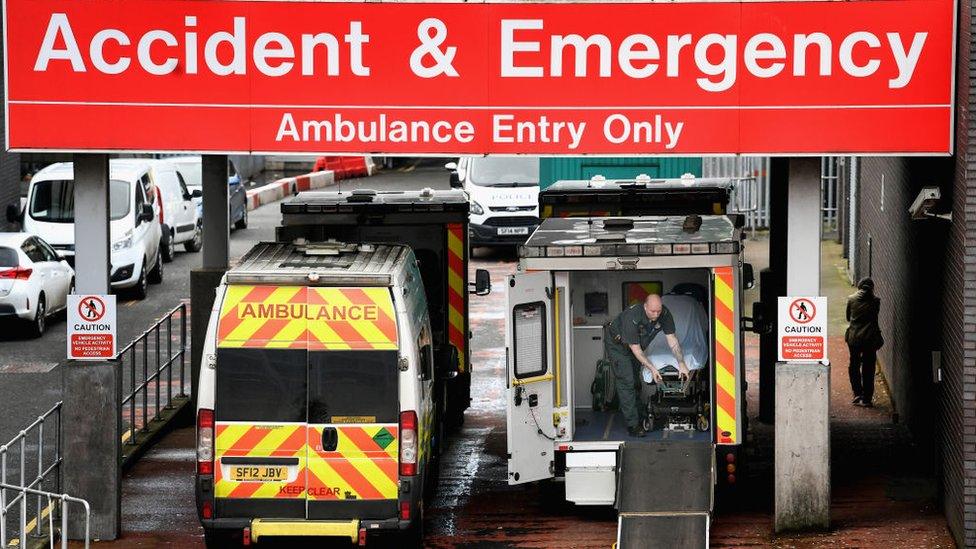Record numbers facing long waits at A&E in Scotland
- Published

The number of people facing long waits at Scotland's emergency departments has hit its highest recorded level, new figures show.
The Scottish government target is for patients to be seen and subsequently discharged or admitted to hospital within four hours.
The latest weekly figures, external show that 8,091 were not seen in the target time.
The number of people who waited as long as eight hours and 12 hours in A&E was also the highest recorded.
The Scottish government has a target of dealing with 95% of patients within four hours which has not been met since July 2020.
It began publishing weekly A&E statistics in February 2015 when meeting the four-hour target dropped to 86%.
In the week to 9 January this year, just 67.4% of patients were dealt with within the four-hour target, the lowest recorded percentage.
The latest figures - for the week to 13 March - show a slightly higher percentage (68.4%) within the target time but far more patients attending A&E.
Highest on record
Of the 25,615 patients who attended a Scottish A&E that week, almost a third took more than four hours to be processed.
The number of people waiting for eight hours or longer was 2,216 - the highest on record.
Some 747 people waited longer than 12 hours - more than the 710 in the week ending 9 January.
In England, NHS stats are published monthly, external.
The figures for all types of A&E in February show 73.3% of patients were seen within four hours.
However, the figure for major type 1 emergency departments was just 60.8%.
Longer stays
A Scottish government spokeswoman said Scotland had the best performing A&Es in the UK but Covid was having an impact, with this week recording the highest number of people in hospital with the virus since the start of the pandemic.
"Hospitals continue to face capacity issues as a result of staff absence and reduced beds due to infection controls, with more acutely unwell patients meaning longer stays," she said.
The spokeswoman advised people to consider if A&E was the right place for their healthcare need or if a GP or NHS 24 could help.
"People should consider whether their condition is an emergency, such as a stroke, heart attack or major trauma, before going to A&E," she said.
Scottish Tory health spokesman Dr Sandesh Gulhane said the figures were deplorable and said excess waits for emergency treatment led to a needless loss of life.
"The crisis on Scotland's A&E wards is not only never-ending, it's deepening - and still the health secretary is conspicuous by his silence," he added.
"Overworked, under-resourced frontline staff are crying out for a coherent strategy from Humza Yousaf to tackle this, yet they are stuck with the same inadequate Covid Recovery Plan he issued months ago."
Scottish Labour health spokeswoman Jackie Baillie said the Scottish government had allowed a "permanent crisis" to take hold.
- Published21 March 2022

- Published18 January 2022

- Published21 December 2021
